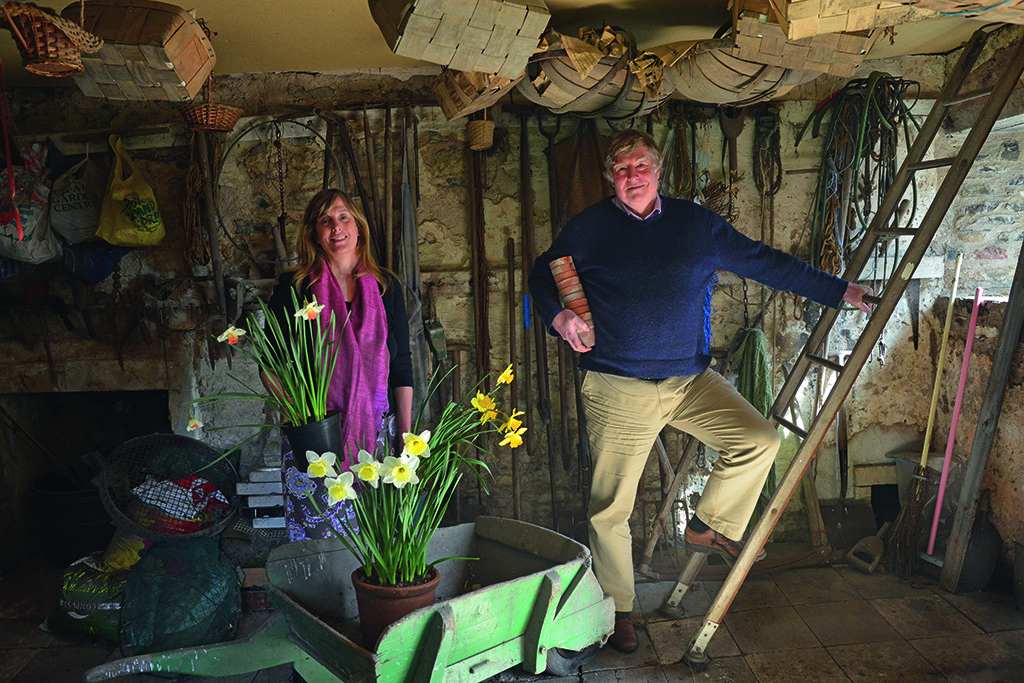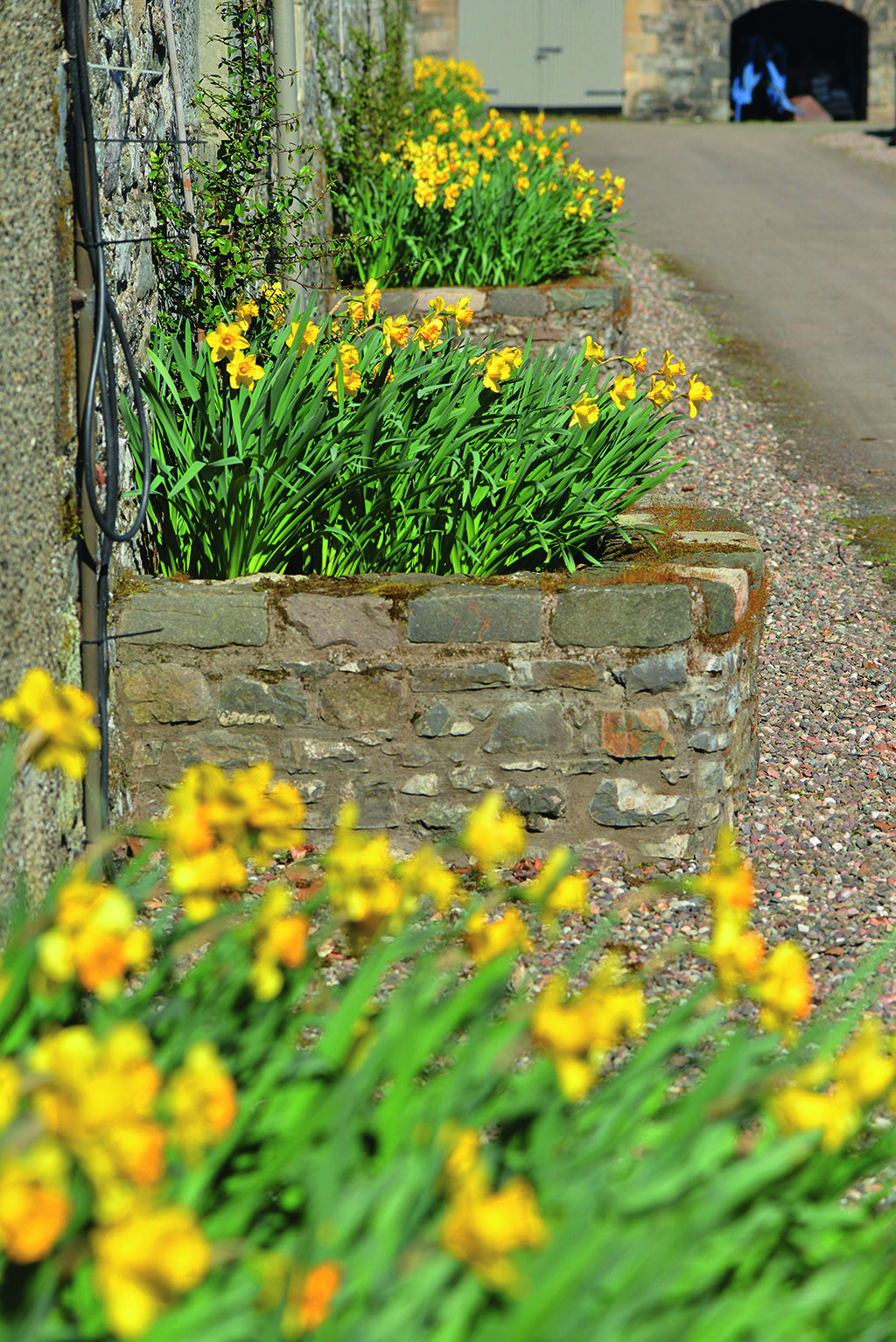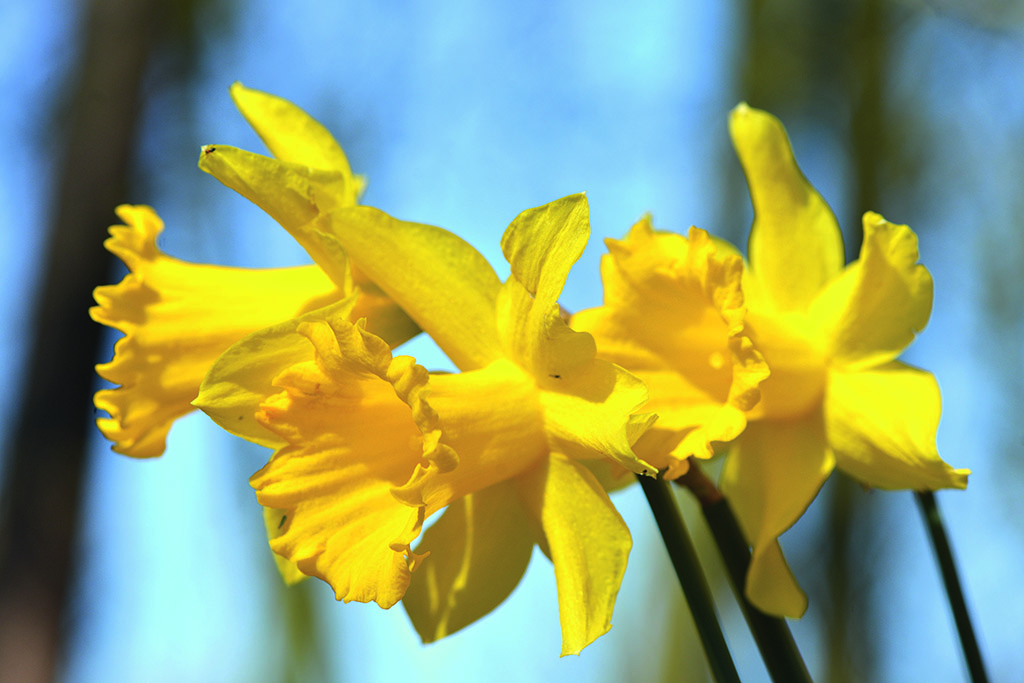
A spring fling in celebration of the daffodil
Throw off the winter blues with a visit to Rossie, the art and science-inspired garden packed with colour and creativity.
Caroline Thomson is passionate about her work in preserving the heritage collection of Backhouse daffodils at Rossie Arts Garden in Fife with her husband Andrew.
An artist and sculptor, who is a direct descendent of the Backhouse family, the renowned Quaker botanist and ethical banking family from Yorkshire, Caroline is filled with the enthusiasm and dedication that drove her forebears. By the late 19th century, the Backhouse family nursery at York was larger than Kew Gardens and employed more than 110 people.
The heritage collection, which includes daffodils and other plants, was established shortly after the couple acquired the property in 2005 following a chance remark by Caroline’s mother, Lady Georgina Buchan-Hepburn. ‘My mother said it would be such a good thing if a member of the family brought the plants and their history together before they were gone forever. This idea germinated and grew into the developing garden which is now here today.’

Caroline and Andrew Thomson in the traditional potting shed (Photo: Angus Blackburn)
Fortunately, Lady Buchan-Hepburn had many memories to start the process. ‘To have those living memories, and to know what the different daffodils looked like and where they might be found was a huge help,’ Caroline says.
Painstakingly, she began sourcing named plants from family gardens, cross-referencing stock with catalogues and lists from the Royal Horticultural Scociety, the Lindley Library and overseas. Currently, National Collection status is being considered. The Backhouse Centre at Rofsie was established to further horticultural research.
In the process, she learnt a great deal about the family influence on many well-known daffodils. William Backhouse (1807-1869) bred the stately, golden yellow ‘Emperor’ and the bi-colour ‘Empress’, two daffodils that form the basis of many modern-day cultivars.
William’s second-youngest son, Robert Ormiston Backhouse, and his wife, Sarah Elizabeth Dodgson, carried on the family tradition of daffodil breeding; Sarah gained national fame in 1916 by winning the prestigious RHS Barr Cup.

Daffodil beds at Rofsie (Photo: Angus Blackburn)
Robert Ormiston caused a sensation in the horticultural world when he introduced the pink-trumpeted, creamy white-petalled daffodil Mrs RO Backhouse, which is available and can be seen in the policies at Rofsie. Robert and Sarah’s son William pursued the creation of the ‘red daffodil’, while other examples of his work are also in the collection.
To fully understand the precise science behind the lengthy breeding process, Caroline embarked on a PhD at Birmingham University. ‘In the first years, I barely scratched the surface,’ she says. ‘There is so much detail involved in identifying the daffodils, they change colour and the corona can change shape during the blooming period, it is a protracted effort.’
The task included planting more than 10,000 historic daffodil varieties at Rofsie, whose ancestry can be traced back to the original Backhouse daffodils.
The garden developed to include the couples’ joint interest in art, wider horticultural issues and science, while also incorporating biodynamic principles into the restored Walled Garden.

Beautiful daffodils in bloom at Rossie arts garden (Photo: Angus Blackburn)
This space peaks in June, when white Rosa City of York smothers the series of metal arches that span the paths. Leading the way through its wooden door, Caroline explains that the garden incorporates ‘themes of art, science and family, which resonate in the design concepts, layouts and plant selections’.
The garden is divided vertically by parallel yew hedges which back wide herbaceous borders planted on grounds that overflow with a wide range of summer plants. ‘Plants from different countries are mixed in together and left to control their own borders in this artwork entitled There are no Borders Here,’ says Caroline.
A horizontal path laid out with cobblestones in the shape of a double helix and inlaid with white, crushed sea shells is laden with symbols. ‘Our joint interests as an engineer and an artist became the starting point for the garden,’ explains Caroline. ‘The crushed shells are a reference to Cave 13b [where the earliest evidence of shellfish has been documented] and the first evidence of human endeavour were the shell people in South Africa.’
The well-labelled daffodil collection is located in south-east facing beds, while the old Victorian glasshouse, on the walled garden’s south-facing wall, is home to Tree Ferns, which are another Backhouse introduction. Heated by a biomass boiler installed by Andrew, whose interest lies in alternative energy, it features a computerised system attached to the old Victorian pipework. ‘Part of our philosophy to be a self-sustaining unit where possible,’ says Caroline. ‘Treading lightly is our aim.’
For further information visit https://www.backhouserossie.co.uk/
(This feature was originally published in 2016)
TAGS

